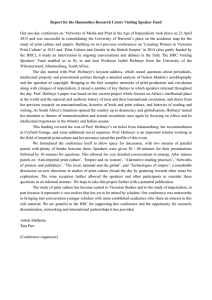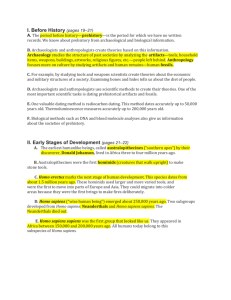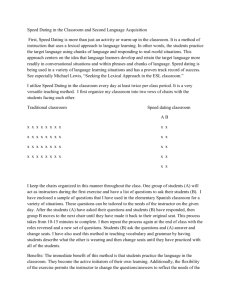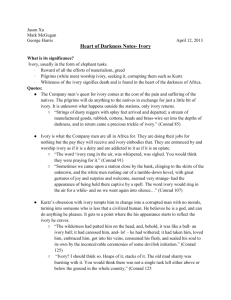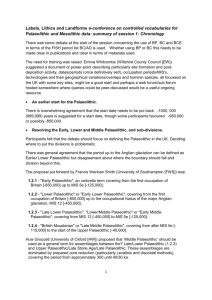The Earliest Migration
advertisement
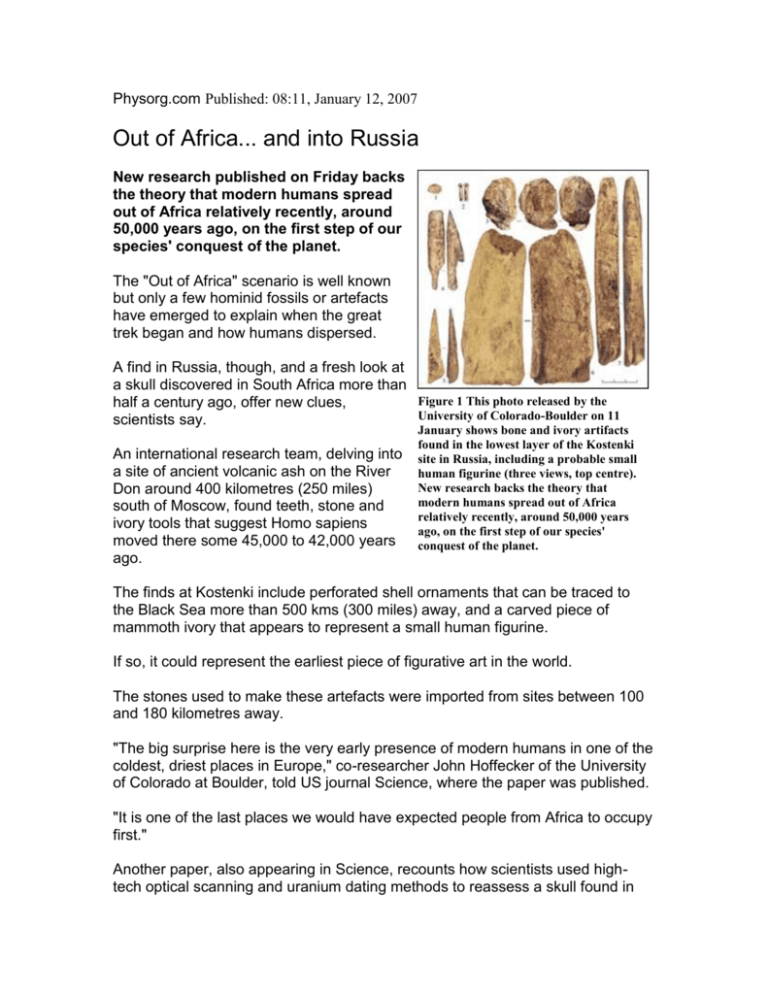
Physorg.com Published: 08:11, January 12, 2007 Out of Africa... and into Russia New research published on Friday backs the theory that modern humans spread out of Africa relatively recently, around 50,000 years ago, on the first step of our species' conquest of the planet. The "Out of Africa" scenario is well known but only a few hominid fossils or artefacts have emerged to explain when the great trek began and how humans dispersed. A find in Russia, though, and a fresh look at a skull discovered in South Africa more than Figure 1 This photo released by the half a century ago, offer new clues, University of Colorado-Boulder on 11 scientists say. An international research team, delving into a site of ancient volcanic ash on the River Don around 400 kilometres (250 miles) south of Moscow, found teeth, stone and ivory tools that suggest Homo sapiens moved there some 45,000 to 42,000 years ago. January shows bone and ivory artifacts found in the lowest layer of the Kostenki site in Russia, including a probable small human figurine (three views, top centre). New research backs the theory that modern humans spread out of Africa relatively recently, around 50,000 years ago, on the first step of our species' conquest of the planet. The finds at Kostenki include perforated shell ornaments that can be traced to the Black Sea more than 500 kms (300 miles) away, and a carved piece of mammoth ivory that appears to represent a small human figurine. If so, it could represent the earliest piece of figurative art in the world. The stones used to make these artefacts were imported from sites between 100 and 180 kilometres away. "The big surprise here is the very early presence of modern humans in one of the coldest, driest places in Europe," co-researcher John Hoffecker of the University of Colorado at Boulder, told US journal Science, where the paper was published. "It is one of the last places we would have expected people from Africa to occupy first." Another paper, also appearing in Science, recounts how scientists used hightech optical scanning and uranium dating methods to reassess a skull found in 1952 near Hofmeyr, South Africa. The fossil is calculated to be 36,000 years old, plus or minus 3,300 years, making its original owner a near-contemporary of the Kostenki people. Some of the skulls features are "archaic", meaning that they are consistent with the crania of Eurasians from the Upper Palaeolithic era rather than of humans today. The Upper Palaeolithic, also called the Old Stone Age, ran from around 40,000 years ago to 10,000 years ago. It is considered a key period in the human odyssey, coinciding with the emergence of new stone tools, weapons and cave paintings. "It just shows how superficial racial differences are, the speed at which they develop," Alan Morris, a University of Cape Town researcher, told AFP in Johannesburg. "(...) If (Hofmeyr man) came and sat beside you on a bus, you wouldn't bat an eyelid. You might glance out of the corner of your eye and wonder where he came from." Anatomically modern humans are thought to have appeared in sub-Saharan Africa around 200,000 years ago. East Africa's Rift Valley, where H. sapiens remains dating back 160,000 years have been found, is widely considered the place where it all began. So if the Hofmeyr dating is right, it means our forebears headed south out of the Rift Valley as well as north, migrating to southern Africa as well as to the Middle East and Eurasia. Another option would be that the cradle of H. sapiens is southern Africa, and that the migration was all northbound -- although there is no fossil evidence to back this. Apart from some early sites in the Middle East, until now the oldest evidence of modern humans out of Africa has been in Australia, from around 50,000 years ago, according to Hoffecker. Of the migration to Europe, Morris said there were several movements, "probably small family groups," that began around 90,000 years ago. The migration stopped for a while, resumed about 40-50,000 years ago, followed by "a very dramatic intrusion into central and western Europe, about 30,00040,000 years ago." © 2007 AFP
